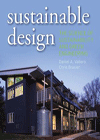...from the U.S. Environmental Protection Agency. “Highly desirable” goals included capacity for 800 staff; 25,000 Btus per sq ft per year projected energy consumption, not counting the data center; documentation to produce a how-to manual; completion by 2010 and more. “If possible” goals included net-zero energy use, LEED Platinum Plus, a design model that achieved 50% better energy use than the prevailing code and more.
The teams had 10 weeks to develop proposals. Haselden and RNL decided to pull out all the stops and offer DOE a net-zero-energy-use building, which meant the architecture would grow out of the building systems engineering.
To achieve its goal, the team needed a superstar consulting engineer, says Macey. They approached Stantec’s John Andary, known for his expertise in energy-efficient building design.
For almost three weeks before Andary had even met any of his future teammates, Stantec, armed with the RFP, did numerous iterations of energy modeling and passive design simulations as well as massing, siting and solar shading studies. The team also selected a radiant heating and cooling system and a lighting system.
Tweaked
Within three days of the first DB team meeting, the concepts were solidified, says Andary. The next six weeks were spent doing continuous cost and energy modeling as “we tweaked the design,” he adds.
A lot of attention was placed on the building envelope. “You can either win or lose in the outward 2 ft of the building,” says RNL’s Hootman.
The design team completed what normally would be beyond schematic design-level documentation for the RFP. In March 2008, the Haselden team won the job in large part because it was the only team that offered a net-zero-energy building, says NREL’s Pless.
The building’s footprint resembles an eccentric letter “H.” The facility’s energy conservation includes many whistles-and-bells strategies. One novel system is thermal storage in the form of a heavy concrete crawl space, called a labyrinth, under the building’s footprint. The labyrinth provides additional capacity for passive heating and cooling.
The building also has transpired solar collectors on the south face. The system, developed by NREL, passively preheats outside air before it is delivered to an inside underfloor air distribution system. Net-zero energy is achieved by a 1.6-Mw rooftop photovoltaic system, added through a power-purchase agreement.
Baker is thrilled all of DOE’s performance goals were achieved at the RSF. But the missionary of green DB won’t be totally satisfied until the model is replicated far beyond DOE’s borders.






